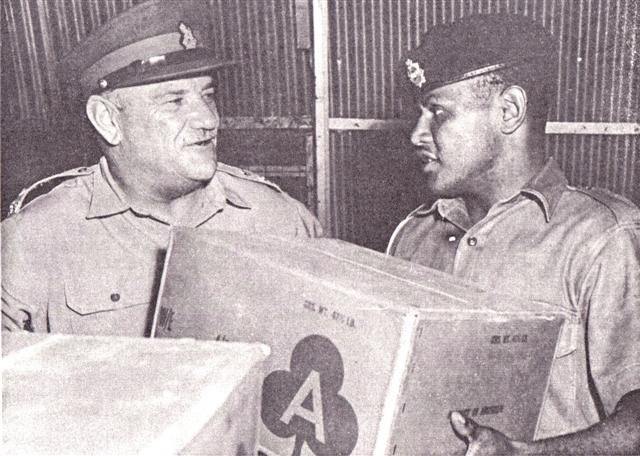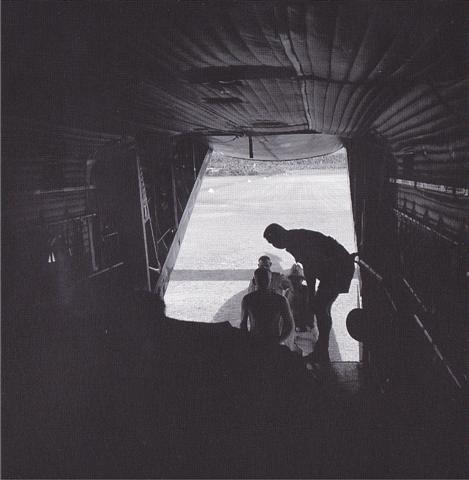RAASC Support in Papua New Guinea



850 Sup Dep PI Murray Barracks
Port Moresby 1969
The original buildings were a large galvanised iron igloo and three huts, which lasted until force expansion and increased availability of funds allowed construction of a purpose-built depot.
The transition was also felt in the transfer of Pacific Islands Regiment soldiers to RAASC. Members of the Regiment were not selected on criteria relating to supplies and transport duties, and so faced a problem of not only training but basic education to cope with the work.
This was overcome progressively by selective recruiting and special training for the trades of clerk, storekeeper and driver.
Photo: C.R. Cox
DST familiarising himself with a different environment
Port Moresby October 1966
Brig R. Durance, visiting 850 Sup Dep Pl which was successor to 115 Sup Dep Pl, meets Cpl Benny Amual, one of the RAASC's latest recruits who were to take on the future operation of the Supplies and Transport Service in Papua New Guinea.
Fortunately most of the early problems of PNG soldiers in poor conditions, accentuated by an unsympathetic Australian Treasury which opposed improvements, were by then largely overcome, and special rates of pay were made available to RAASC tradesmen.
RAASC Digest 1967
Loading supplies for the border posts
Moem 1968
Air transport had been instrumental in opening up the Territory from the early 1930s, and had become a principal means of supply during World War 2, spawning the AASC air maintenance companies.
Chartered civil light aircraft were used for passenger and freight movement to patrols and outstations until the advent of the Hercules which flew their first operational flight into Wewak in 1959, after which regular RAAF support became available.
This usually took the form of Caribou short landing cargo planes, by either air drop or landing, here being loaded by members of 852 Sup Dep Pl.
Photo: C.R. Cox
RAASC Support in Papua New Guinea


